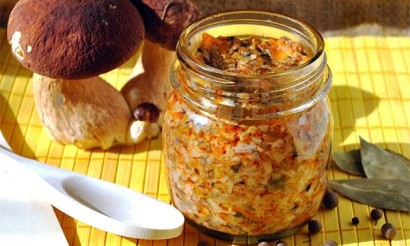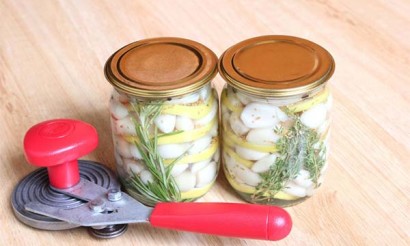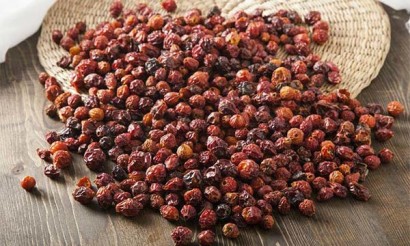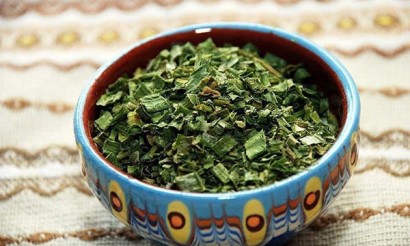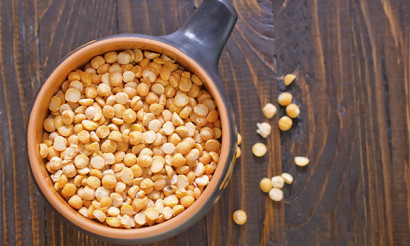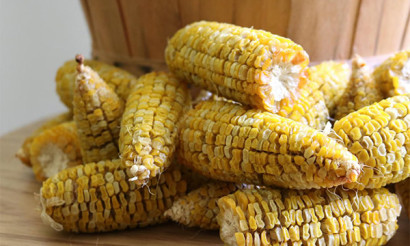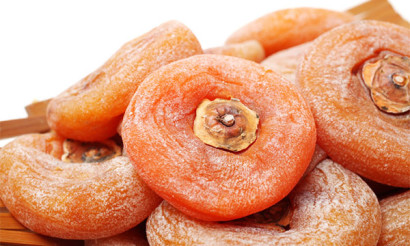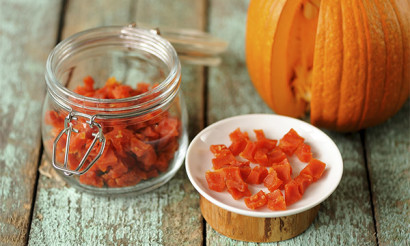How to Dry Apples at Home
In late summer and fall, when apples ripen together, literally all housewives fall into a state of slight panic: jams and jams brewed for the coming winter, compotes canned, juice pressed, bottles filled with future wine, which still stands and ferments, but ripe, juicy fruits still arrive! What to do, where to put the harvest, what else to make?
- What varieties of apples are best suited for drying
- How to choose the right one
- How to prepare apples for drying
- How to Dry Apples at Home
- In the oven
- In an electric dryer
- In a microwave oven
- Air grill
- In the multicooker
- In the sun
- How to Dry Apples in Winter
- How much of fresh apples can be made into dried apples
- How to Properly Store Dried Apples
- What is Dried Apples Useful for
If you can't sell the surplus or give them away to friends and neighbors, the most sensible way out is to dry apples. In the form of dried fruit, they lie well for many months and do not spoil, preserving all the useful substances, including vitamins. They can be used for cooking compote, baking pies, decorating salads or meat dishes, and just drink a cup of tea with a slice of dried fruit is very tasty.
What kinds of apples are better for drying
For drying are suitable for different varieties of apples - both summer and autumn. If you take a little unripe fruit, then in the dried form they will be quite dense, with a beautiful beige and red color. If the dried fruit is supposed to be used instead of candy for tea, it is better to take sweet varieties. The chips obtained from such apples will be soft, friable, with brownish specks of sugar, baked during drying.
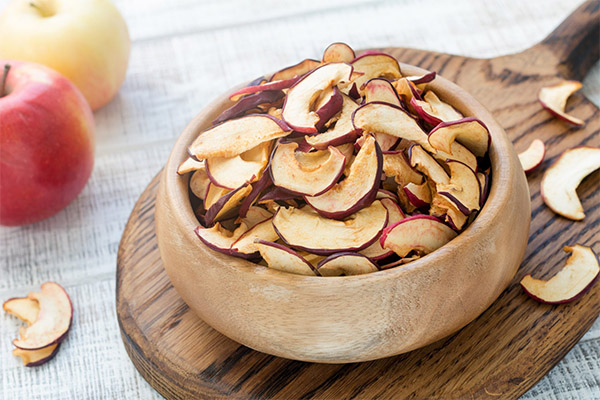
Even a white pour is suitable for drying. Usually hostesses are reluctant to use it for other preparations, because in jams or compotes apple pieces fall apart, turn into mush and get unattractive appearance. Since it usually ripens during the hot summer, it can be dried under the sun in the open air, which will not waste energy that would be consumed if the drying was done in an electric dryer, air grill or microwave.
Some families even use wild apples brought from the woods for drying.
But still the best choice for drying will be the fruits of autumn ripening period, usually they are hard, sour-sweet. They retain their flavor qualities perfectly in dried form. These can be the traditional old varieties - such as antonovka, pepin and aport - as well as younger, but already widespread in gardens - Welsh, Gala, lobo, Golden Delicious, Bogatyr, Bolotovsky, Mackintosh, Orlovsky striped, Borovinka, seedless and other autumn apples. All of them and in dried form differ from each other in taste, so you can always choose those that are suitable for compote, and those to put as a filling in pies, which is so pleasant to bake on a cold winter evening.
How to choose correctly
It is not necessary to choose the best fruits for drying, even fallen apples and apples, slightly gnawed by insects, will do. From them you can always cut good slices or rings.
Do not choose large fruits, it is better to give preference to medium or small apples - their skin is thinner, and the seed bolls are not strongly developed, so there will be less waste. In addition, the slices of large apples turn out too large, awkward.
How to prepare apples for drying
It is best to dry apples in batches, dividing them by variety: one variety - one batch. Within the batch it is desirable to sort the fruit by size: small to small, medium to medium. This way they will reach maturity at the same time.
The fruits should be well washed, especially if they are bought, and it is not known under what conditions they grew and what compositions treated them from diseases and insects. Then you can immediately start cutting the apples into slices or circles, it is important that they should all be about the same thickness - but no thicker than 0.5 cm.
It is not necessary to remove the skin, it will help preserve the shape of slices and fruit flavor. In addition, it is the rind that is rich in fiber, which is necessary for improving digestion and order in the intestines. Each hostess decides for herself whether to remove the seed pods or not.
Slices of sweet summer varieties can be dropped for about 10 minutes in water with lemon juice (a large spoon per liter of liquid). Thanks to the acidic environment, they will not darken. Particular connoisseurs of apples also add pineapple juice to this solution, which gives the finished product a sweetness and dampens the citric acid. Some hostesses dissolve ascorbic acid in water (10 tablets per glass of liquid).
There are fans to soak apple slices in salt water (100 grams per bucket of liquid). This formulation also allows the slices to remain light. It is especially suitable for drying apples in the sun, as the salt helps protect them a little from flies.
After taking the pieces out of the sour or salty solution, you need to put them on a towel or any other cotton cloth to drain the water, and only then send them to dry.
How to Dry Apples at Home
Choosing the method of drying apples, you need to proceed from how much time is available for it.
So, for apples that are dried outdoors and in the sun, depending on the density of pulp and air temperature, the time of readiness is from three to seven days. A large volume of raw material can be taken outdoors at the same time.
For drying in the oven, 8-10 hours is enough, but the amount that can be harvested at one time is limited by the size of the tray.
In electric dryers, the fruit reaches the desired condition faster than in the oven - in 6-7 hours, and on several trays, the so-called "floors" of the dryer, more apple raw material will fit.
The fastest way to cope with drying is the microwave, but you can put it in the smallest amount of fruit.
In the oven
Properly drying apples in the oven does not mean simply placing them on a baking tray and, turning on the gas, forget for a few hours. You will have to carefully monitor the process, since depending on what mode will be chosen, you can get a product with completely different properties. Particular attention will be needed to the end of drying: if you do not take the pieces out of the oven in time, it is very easy to over-dry them.
If you want to get dried fruits crispy, moderately hard, you need to start the process in the oven, heated to 70-75 degrees, and after a couple of hours, lower the temperature to 50-55 degrees.
To make the ready slices pliable, soft, and easily chewed, you should start with a lower temperature - about 40 degrees, and then raise it and bring it to 60 degrees.
Cut apples should be placed in an even thin layer on a baking tray lined with parchment. Do not close the door of the oven during drying, because it is necessary that the air inside does not stagnate, and could freely circulate from inside to outside, at the same time taking away excess moisture. The open door of a hot oven, of course, is not good for its future use. It is better if the oven has a convection mode, in which case you can keep the door closed.
To achieve even drying, apple slices should be stirred from time to time, and better - turn over, because because of the fact that the trays are solid, without holes, the hot air does not blow around the raw material from all sides.
In an electric dryer
There is nothing difficult about making dried fruit in an electric dryer, even a novice, inexperienced hostess can cope with it.
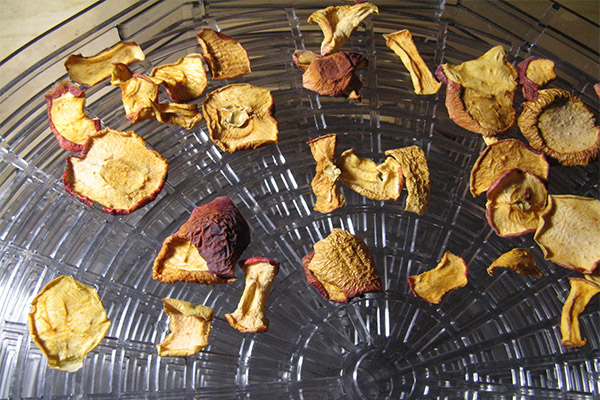
The rings will take too much space on the shelves of the dryer, so it is more convenient to stack the apples, sliced into thin slices. You need to put the slices tightly on the shelves and assemble the dryer, fixing all the "floors". Set the timer to 4 hours and the temperature to 70 degrees - and you can easily do other things. Clever device will remind about the end of the process with a characteristic beep.
But that is not all. As in usual domestic dryer the hot air goes out from the bottom and goes through all the "floors" going up, the apples lying on the lower shelves get dried more than those on the upper ones. So you need to swap "floors" in places: the upper - to lower, the lower - to raise. And again run the dryer for 3 hours at 70 degrees. But this is a general recommendation: depending on the variety of apples may dry out a little earlier, or it will take a little more time for the product to be completely ready.
You can start to check if the apples are ready when they have started to darken noticeably and have shrunk in size. If no moisture comes out of a broken piece, but the pulp is light and fragrant, and the surface has already turned into a crust and turned brown, then the product is ready.
A big advantage of this method of drying - in its process apples do not require attention and save time of the hostess. In addition, the device maintains a constant and fairly gentle temperature, the fruit is not burned out, as it is quite possible in the oven, namely dried, so they save a maximum of vitamins. Dried apples can be perfectly stored for 10 months.
In the microwave
Drying fruit in the microwave in the summer is especially convenient because it doesn't generate as much heat as the oven, which is valuable in the heat. Plus, it's quick and affordable - after all, almost every family has a microwave today. However, in order for the drying process to go well and to get good quality dried fruit, you will have to adjust and select time and power by trial and error. However, since the microwave oven will not hold many apples, in case of failure the losses will be small - if you do not take into account the power consumption, which in the microwave oven is twice as high as in the electric dryer.
Sliced apples must be dried with a towel to remove any water droplets left after washing the fruit, and after placing them on a plate, send them to the microwave oven. Turn it on and set it to 600-700 watts, which will correspond to a temperature of 75 degrees, and a time of 3 minutes. After that, check the consistency of the apples. In order not to dry out the product, set the timer for 30 seconds and after stopping again to see how the fruit slices look like. In this way, by repeating 30-second sessions, you can catch the very moment when the apples will acquire the desired appearance and structure. The skin will fade and the pulp will stop sticking to your hands. A properly dried slice will have a nice cream color (winter varieties are darker), soft and pleasant to the touch.
If you want the apples as crispy as chips, you need to hold them longer - up to 15 minutes in total - and add more power. And so that both sides of the apple slices get the same color, you can turn the slices upside down at one of the breaks.
If the slices will dry unevenly, you can at the next stop of the program take out some of the dried fruit, then the rest will finish drying faster.
Although the temperature of the apples in the microwave corresponds to the temperature normally set in an electric dryer, due to the use of ultrahigh frequency waves the process proceeds differently - the heating and evaporation of moisture occurs from the inside. This does not have the best effect on the vitamins contained in the fruit - they are destroyed more than with other methods of drying.
In the air grill
The air grill is, like the electric dryer, the ideal appliance for making apples. With its help, it manages to evenly remove moisture from the fruit. It is possible to bring the dried fruit to the desired condition within an hour, and this is much faster than air drying, oven or electric dryer. The finished product turns out tender, with a moderately viscous pulp. The only disadvantage of drying in an air dryer - it can be loaded with an extremely limited number of apples. To dry a large batch of fruit, you need to divide it into several parts and repeat the process more than once.
The creators of the air grill did not assume that smart housewives will learn to dry fruit in this appliance, so there is no provision for moisture drainage. This means that the lid must be kept open during the drying process.
Thin slices of apples should be placed on the grids of aerogrill so that there were gaps between the slices - for free blowing. The temperature regulator should be set to 100 degrees, the airflow rate regulator should be fixed at the "low blowing" mark. On those models where this mark is not present, set the regulator as close as possible to the beginning of the scale. Dry apples in these parameters for one hour, then stop the process and check the condition of the fruit slices.
If it turns out that the apples are not quite dry, for the preparation of subsequent portions to set the temperature to a higher - 120 degrees. The efficiency of the drying process in the new mode depends on several factors - both on the model of the aero grill, and on the variety of apples.
Aerogrill as well as the electric dryer does not require the attention of the hostess during the drying of fruit and frees up time for other things, which is undoubtedly the first plus. The second plus is that this procedure takes a little time. But there is a disadvantage - the temperature in this device is too high, as a result, apples stick to the lattice, and the fruit itself, having dried on the outside, sometimes does not have time to reach readiness inside. It should also be taken into account that the running device increases the ambient air temperature, which is not quite good in the summer, when both on the street and in the house is hot.
In a multicooker
Multicooker is also suitable for drying, but due to the fact that the size of its bowl is small, simultaneously drying a lot of apples will not work.
Cut into rings or slices, you need to put a thin layer of apples in a bowl, where the pre-laid parchment paper. Dry the fruit in two stages. On the first set the temperature at 70-80 degrees and run the multicooker for 3-3.5 hours in "Baking" mode. During this time, more than half of the liquid will evaporate from the fruit. In the second stage at a lower temperature - about 50 degrees or 3-5 degrees higher - continue drying in the "Heating" mode for about 7-9 hours. In total, the time should be 10-12 hours. Do not close the bowl of multicooker during the whole process, starting from the first stage. From time to time the apple slices can be stirred, so that they dry more evenly.
If you follow all the rules, the finished product will have a beautiful brownish-yellowish hue, but if the drying process is delayed, the dried fruit will dry out and darken. Due to the low temperature of heating it will be possible to preserve all the vitamins and other useful and nutrients in the fruit.
As a result, 130 grams of dried fruit will come out of a kilogram of apples.
In the sun
Drying in the air, under the sun is the most economical option in terms of energy consumption, but at the same time the most uncomfortable. After all, it is necessary to have enough space, where the fruit will stay for a long enough period of time - for example, to install special tables or workbenches. The fruit slices themselves should be placed either on some grids or on trays.
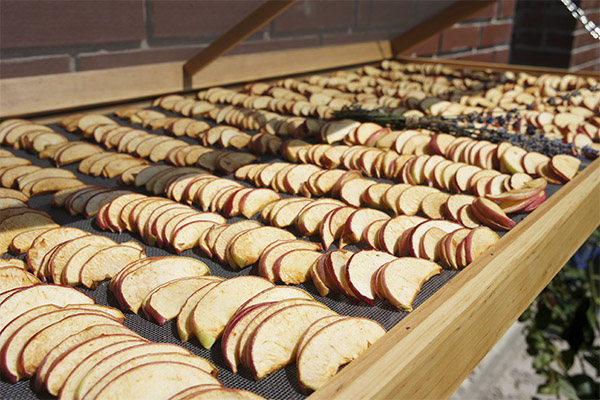
In this case, the owner for a few days is as if tied to the apples, he can not go far away: suddenly it will rain, and they have to be urgently saved? And in hot weather the slices will have to be turned regularly, maybe more than once a day, to dry evenly on both sides and not to burn the dried fruit.
However, the big advantage of air drying is that many apples can be laid out at the same time, and with constant sun and heat, they will dry quickly, shrinking in size, so you can move the dried slices and make room for new portions. However, do not put slices cut on different days on the same tray or on the same rack.
Some hostesses dry apples on a string by stringing rings of fruit on it like beads. This saves a lot of space, fruit "beads" can be hung even on the balcony, but in this way the fruit dries and ventilates worse than in the unfolded form.
In any case, whether in trays or on ropes, it is better to cover apples with gauze to protect them from flies. Pre-soaking the slices in salt water saves them from insects only at first.
At night, trays with apple slices should be brought from the street into the house in order to save the dried fruit from the chill of the night or possible unexpected rain and morning dew.
Apples, which are planned to dry in the air, should not be washed, just wiped with a towel, wet or dry, because during the street drying they will get dirty anyway: flies can sit on them, and dust and sand can fly around. That is, before using, the finished product will have to be soaked and well washed, unlike that dried in the oven, electric dryer, aerogrill or multicooker, which always stay clean. When stored neatly in a tightly closed container, they are completely ready to eat - they don't need to be washed.
It is better to cut and arrange the apples in the early morning, so that during the day, by evening, they have had time to roast properly in the sun and acquire an external dry crust.
It is not necessary to spread the slices out evenly and neatly, one to one - as, for example, in an electric dryer. It is enough just to scatter them in a thin layer on the trays. Throughout the day, the apples are either stirred by hand or simply shaken in the tray.
Usually, if the weather is good and hot, the dried fruit is ready in a week.
How to dry apples for the winter
For making apples for the winter, all of the above methods are suitable - from outdoor drying in the sun to the use of electric devices. It is important to remember that those fruits that are dried in the sun, before putting into storage, it is better to hold a few minutes in a hot oven. To do this, it should be heated to 100-120 degrees, turn off and immediately put there trays with dried fruits, which are kept with the door closed, until the oven cools completely. This is necessary to disinfect the product. With other methods of drying apples will be disinfected in the process itself.
What properly dried apples should look like
Well-dried apples are dry on the outside, but firm enough and not brittle. Their flesh is lighter on the inside than the outer crust, but it does not release moisture and is not sticky to the touch at all. Such pieces are not difficult to chew.
Apples dried in accordance with all the rules lose their shine, become dull and take on a darker color than fresh apples. At the same time, the color of the flesh itself can vary from lighter shades of cream to brownish-red. It depends on a combination of factors: the type of fruit, when it was harvested, what plant protection agents were used and what fertilizers were applied, and even the weather in which the crop was harvested. Apples will be darker in late fall and winter varieties, while summer varieties will be much lighter. Achieve a darker shade of finished product and dry apples for a longer time is not necessary, because this leaves less vitamins and other nutrients in the fruit.
How much dried apples are made from fresh apples
Reducing the weight in drying is due to evaporation of water, in the end, as a rule, the weight of the product is reduced by about 85 percent. So it turns out that from a kilo of apples after drying, depending on their variety, goes from 130 to 150 grams of finished product.
How to store dried apples
And now the apples are dried and ready to go for winter storage. The hostess has spent a lot of time and effort to process the rich harvest. In order for all the efforts not to go in vain, it is necessary to ensure proper storage conditions for dried fruits.
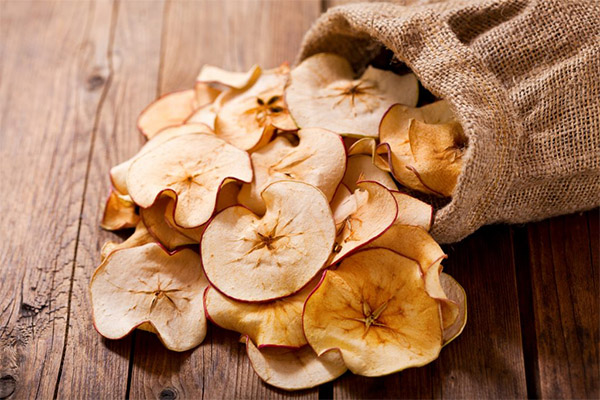
For this purpose, first of all, after drying, the apples should be thoroughly checked to find out whether there are one or two undried apples among the absolutely dry slices. If they are not found in time, they can spoil the whole batch of apples.
Dried fruits should be poured into one large pillowcase and left for a couple of weeks. During this time, the humidity level inside the slices will equalize, which will prevent possible later appearance of rot or mold on the product. And only after soaking in a pillowcase should the fruit slices be divided into small portions and distributed in the container in which they will be stored all winter - cotton bags or cardboard boxes. Plastic containers and bags of polyethylene are completely unsuitable for dry apples.
It is important that the room where the dried fruit will lie, well ventilated, and was not only cool, but also dry, because in a humid environment, apples deteriorate very quickly. Also consider that dried fruit easily absorbs foreign odors, so you should avoid their proximity to substances that spread strong aromas. In addition, bags and boxes with the finished product should be inaccessible to mice. If all the above conditions are observed, the apples will perfectly preserve their useful qualities and appearance for 10 months.
You can immediately prepare small sets, which you can later take to work or on the road as a snack. For this purpose, in quite small (portion) boxes or bags put, in addition to dried apples, a small handful of nuts, candied fruits, dried or dried berries or fruits - apricots, cherries, cranberries, black currants, raisins or plums. Such sets in a cool room are great stored for six months.
Some hostesses also prepare baking kits in advance by adding cinnamon to the bags of apples. This storage option is also possible, but for a shorter period - so that the flavor of the spice has not had time to disappear.
If you need to keep dried fruits for a longer time, they are put in the freezer.
What are the benefits of dried apples?
Scientists have noticed that over the whole year of storing dried fruits, if all the rules are followed, apples lose no more than 5 percent of useful substances. Dried apples are valued primarily because they retain almost all the vitamins. For example, they have more vitamin B than in those just plucked from the tree. Vitamin C is less than in fresh fruit, but it is still present in sufficient quantities in dried fruits. The amount of vitamins A, H, PP and K is practically not reduced by drying.
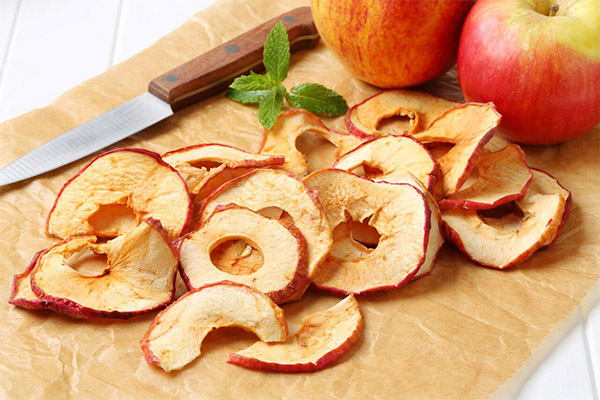
The amount of potassium in dried apples increases compared to fresh ones; due to this dried fruits have a good diuretic effect. The content of trace elements such as iron and copper is also increased. Therefore, dried apples are an excellent means of preventing iron deficiency anemia.
Dried fruits contain sodium and phosphorus, which strengthen teeth and bones; magnesium, beneficial for the nervous system and brain function; magnesium, used to eliminate depression and prevent heart diseases; fiber and sugars (fructose and sucrose), which give the body energy.
Dried apples are very nutritious because the water has been almost completely removed from them: 100 grams of fruit has about 250 kcal.
Dried apples are useful for all organs and systems of the body, but people suffering from gastritis, peptic ulcer and duodenal ulcer should be careful with them. To improve the heart and blood vessels, dried fruit is a treasure. They can inhibit the formation of atherosclerotic plaques, protect against heart attack or stroke, help in adjustment of heart rhythm and alleviate coronary heart disease. Dried fruits are very useful to those who have had a heart attack, they restore and maintain strength.
During the outbreak of autumn and winter colds and respiratory infections, dried apples, due to the complex of vitamins they contain, which support the immune system at high levels, can protect people from the disease. Many doctors are sure that regular consumption of such dried fruits is quite enough to do without pharmacy vitamin preparations.
Dried apples fiber allows you to clean the intestines and adjust their peristalsis and regular emptying. In addition, it improves intestinal microflora.
For women, dried apples are simply necessary as a means of preserving the beauty of hair and skin. They help to strengthen the hair and increase its volume. The systematic use of the product improves the appearance of the skin, it brightens and looks younger, fresher and more attractive. Pregnant women can use dried fruit to combat pigment spots on the face and reduce swelling.
Elderly people dried apples are useful for their ability to improve memory, easier to concentrate attention.
«Important: All information on this site is provided solely for introductory purposes. Consult a specialist before applying any recommendations. specialist before you use any of the recommendations. Neither the editors nor the authors shall be liable for any possible harm caused by materials."


